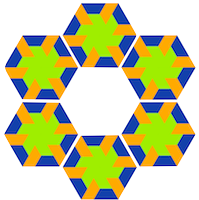I started working on this “yet-another-web-server” project for one of the most important reasons: because its fun. I got inspired for doing this after reading about the Netty framework and all the positive reviews that people write.
My requirements for this server are
provide a minimal MVC framework that uses renderSnake to render HTML pages (distributed) Http session management using JBOSS Infinispan, a modern caching solution use Netty , a well-designed fast server framework which I will use for its HTTP support components are wired together using Guice, a lean dependency injection library support for a minimal feature set to run Web applications GET, POST Redirects,Forwards Sessions, Cookies Error Handling (404,500,.
For the past month, I have been working on a new iPad Web application that recently was launched at 6hoek.com. This application provides easy access to the complete product catalog of the Dutch online webshop bol.com.
Because it is targeted to owners of tablet devices such as the Apple iPad, I decided to embrace the upcoming JQuery Mobile framework (JQM), an open-source Javascript library that provides an unified UI to various mobile devices.
rendersnake is a Java library for creating components and pages that produce HTML using only Java. Its purpose is to support the creation of Web applications that are better maintainable, allows for easier reuse, have testable UI components and produces compact HTML in an efficient way.
This blog post explains how to start from a carefully designed rich HTML page and create new or use the components available in the library.
renderSnake is a open-source library for creating components that produce HTML using only Java. By defining Java classes for HTML components and pages you can exploit all the language features (e.g. inheritance, composition, type-checking) and IDE tooling (e.g. refactoring, unit-testing, references search, debugging,…). In addition, renderSnake is designed to produce compact HTML in an memory efficient way.
The "V" in MVC Basically, renderSnake is responsible for the presentation layer of a Web application.
JNIPort for VisualWorks provides a way to use Java and its huge number of available libraries directly from Smalltalk.
For example, to access the Google Spreadsheets APIs and Tools, you need to download the Java client libraries and all its dependencies. The paths to there Jars must be known to the JVM and can be set through JNIPort. For easy deployment, I put together a single jar using an Ant build script such that the Runtime settings could be:
SelfDianogse is a library of tasks to diagnose a running system with respect to its dependent external resources. Recently, I did some Rails development and was thinking about how to implement it for the Ruby on Rails framework ? Obvious choice is to make a plugin that on installation adds the SelfDiagnoseController.rb to the application. Because of the scripting nature of Rails framework, putting the configuration in XML (as it is done for Java) is not the Ruby-way.
In the upcoming release 1.1 of the SelfDiagnose task library, a new task has been added called CheckEndecaService. Endeca is commercial software that provides excellent Search services to e.g. e-commerce web applications. This particular task checks the availability of that service and can perform a simple query. To implement this, the following snippet has been used:
HttpENEConnection connection = new HttpENEConnection(); connection.setHostname(host); connection.setPort(port); UrlENEQuery eneQuery = new UrlENEQuery("N=0", "UTF-8"); ENEQueryResults eneResults = connection.
